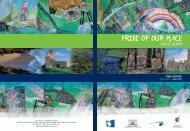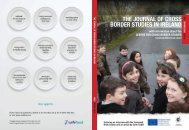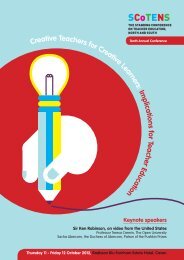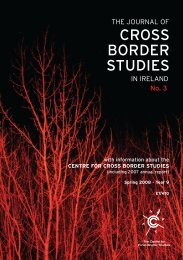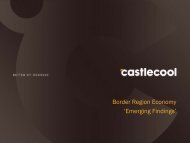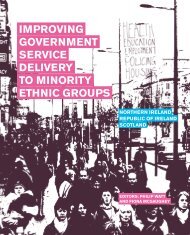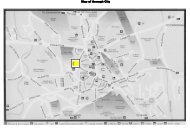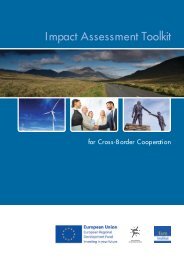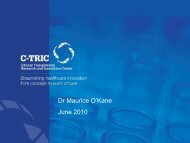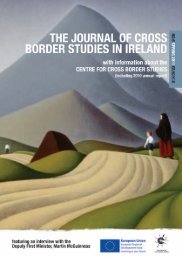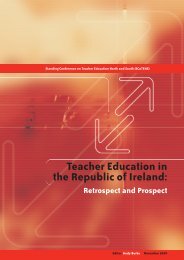4858 Mental Health Report - National University of Ireland, Galway
4858 Mental Health Report - National University of Ireland, Galway
4858 Mental Health Report - National University of Ireland, Galway
Create successful ePaper yourself
Turn your PDF publications into a flip-book with our unique Google optimized e-Paper software.
Findings from the Compatibility and<br />
Comparability <strong>of</strong> <strong>Mental</strong> <strong>Health</strong> and<br />
Related <strong>Health</strong> Data Sources<br />
Irish sample average over five units higher than the English sample average.<br />
When analysed by sex, the health advantage <strong>of</strong> the population <strong>of</strong> the Republic <strong>of</strong><br />
<strong>Ireland</strong> persisted, though the difference between Irish and English men was not<br />
significant. With regard to all age groups the population <strong>of</strong> the Republic <strong>of</strong><br />
<strong>Ireland</strong> had a significant health advantage over their English counterparts in<br />
terms <strong>of</strong> mental health scores.<br />
However a direct comparison is difficult as it should be noted that the two<br />
different modes <strong>of</strong> collection <strong>of</strong> the two surveys could have influenced these<br />
results. The majority <strong>of</strong> the Irish interviews were by telephone and the SF-12<br />
(subset <strong>of</strong> questions from the SF-36) was used. In the English study the SF-36 was<br />
used and data was collected by mail questionnaire (Layte & Jenkinson 2001).<br />
HBSC<br />
The <strong>Health</strong> Behaviour in School-Aged Children (HBSC) study was carried out in 28<br />
countries including England, Northern <strong>Ireland</strong> and the Republic <strong>of</strong> <strong>Ireland</strong>. The<br />
HBSC study is a unique cross-national research study conducted in collaboration<br />
with the WHO Regional Office for Europe. This project aims to gain new insight<br />
into and increase understanding <strong>of</strong> health behaviour, lifestyles and their context<br />
in young people. The HBSC study aims to inform and influence health promotion<br />
and health education policy, programmes and practice aimed at school aged<br />
children at the national and international levels (World <strong>Health</strong> Organisation<br />
2000). The study involves extensive quantitative data collection from a<br />
representative sample <strong>of</strong> 11-15 year olds every three to four years. The last survey<br />
was carried out in 1997/1998 (<strong>Health</strong> Promotion Agency 2001).<br />
The survey is conducted in the school setting and involves children completing a<br />
questionnaire that was designed by international HBSC members and the HBSC<br />
international research protocol. The data can be used in two main ways: to study<br />
trends over time both within and between countries; and to enable the analysis<br />
<strong>of</strong> inter-relationships between health behaviour and health, and the factors that<br />
may affect them. The core questions, which must be used in each country, are <strong>of</strong><br />
particular use for monitoring, and the focus questions provide the opportunity to<br />
explore certain issues in greater depth. On the national level, it is <strong>of</strong> critical<br />
importance that each country draws its sample in a way that meets its needs for<br />
valid comparisons over time and within and across regions. In an international<br />
research project investigating comparisons across countries, each participant<br />
should draw the sample in a similar fashion (World <strong>Health</strong> Organisation 2000).<br />
Assessment <strong>of</strong> how students feel in general - whether they feel low (have<br />
negative affect) or lonely - although not a direct measure <strong>of</strong> health, was included<br />
as indicator <strong>of</strong> mental health (HBSC 2000). The following comparisons between<br />
school aged children in England, Northern <strong>Ireland</strong> and the Republic <strong>of</strong> <strong>Ireland</strong><br />
were made using HBSC data.<br />
110



